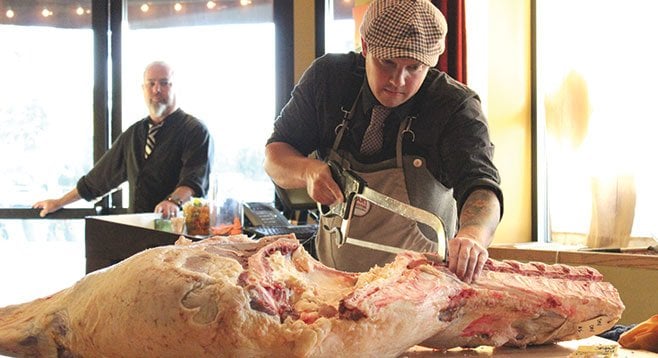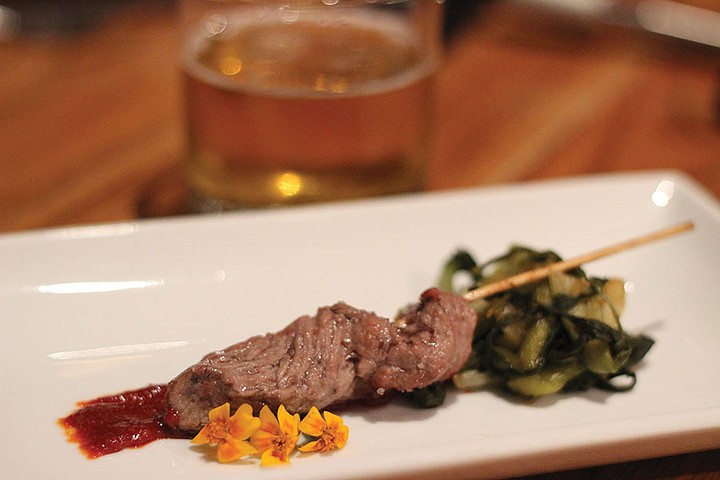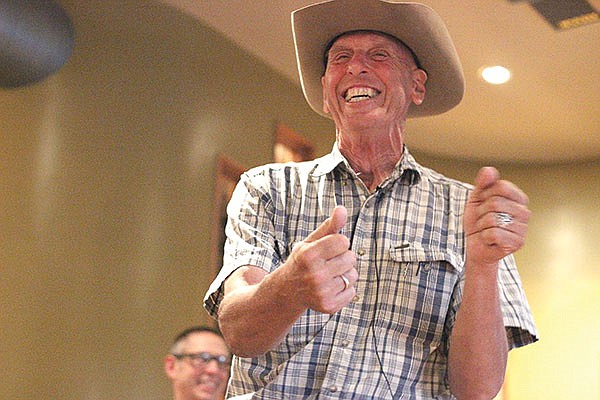 Facebook
Facebook
 X
X
 Instagram
Instagram
 TikTok
TikTok
 Youtube
Youtube

I didn’t know sheep had rectangular pupils. I guess I’d never gotten close enough to notice. But there they were, pleading up at me as I held the animal’s head and torso in place over a hole in the ground. Without ceremony, Asan slit its throat with a kitchen knife. We watched in silence as the sheep shuddered, little rectangles constricting in panic — life draining out of them and into the earth — then dilating into cold, vacant slots when the kicking stopped.
That was the first time I ever saw an animal slaughtered. I was 20 years old. I was also a vegetarian of about three years. Asan, a West African dance instructor from Senegal, laughed at me and my friends as we fumbled to help him skin the carcass and remove the organs. He had done it so many times that the movements came effortlessly. I felt like a fool.


That night I ate the traditional sheep stew that Asan prepared for his son’s first birthday. It made sense. I felt like I’d earned it. Or more, that the sheep deserved it. Eating the animal gave its life closure — kept it connected, somehow.
After that I began selectively eating meat with increasing regularity. I recognized that my hesitation wasn’t with killing but with the largely mechanical slaughter that is typical of factory farms in America.
It was this very same uneasiness that led butcher James Holtslag and longtime friend Trey Nichols to start Heart & Trotter — a whole-animal butchery that aims to open shop in North Park this November.
“We’ve really come together with friends and family in San Diego through dinners and barbecues, and we kind of got fed up that we didn’t know where our meat was coming from,” Nichols recalled during their August debut at Alchemy in South Park.
“Somebody would ask, ‘Hey, where’s this cut from?’ and we would have no idea. We weren’t even sure if it was from one animal or not.”
In response, Holtslag embarked on a three-month apprenticeship at Lindy and Grundy. The Los Angeles local/sustainable butcher shop was the only of its kind in Southern California, until now.
“Whole animal means two things,” Nichols explained. “We are not going to buy another cow until that steer is all gone and sold. [It also means that] nothing is going to go to waste.”
To demonstrate, Holtslag butchered a beef hindquarter while servers distributed a six-course bovine-and-beer pairing orchestrated by Alchemy chef Ricardo Heredia and Societe Brewing Company.
“The key to whole-animal butchery is gravity,” said Holtslag. “You want to disconnect the muscle from the connective tissue. The more fat, the easier it is to disconnect. More fat means more flavor, but with grass-fed you already have amazing flavor anyways.”

Around the fourth course, John “Dey Dey” de Bruin showed up fresh off a drive from his ranch in Lompoc, just ten miles shy of Heart & Trotter’s 250-mile limit.
“The context for my business and my life is real simple: it’s all about the food,” de Bruin said, grinning beneath his beige cowboy hat. “We as a society have lost track of what it means to have great food.”
A former engineer of satellite systems for the government, de Bruin now makes use of bio-mimicry and hydroponically grown barley to raise chickens, pigs, and cows as sustainably as possible.
“Beef is really great,” de Bruin shouted at one point, mirroring my internal monologue as I chased a tri-tip pot-sticker with strong, dark Belgian ale. “I love beef. Beef is awesome."


I didn’t know sheep had rectangular pupils. I guess I’d never gotten close enough to notice. But there they were, pleading up at me as I held the animal’s head and torso in place over a hole in the ground. Without ceremony, Asan slit its throat with a kitchen knife. We watched in silence as the sheep shuddered, little rectangles constricting in panic — life draining out of them and into the earth — then dilating into cold, vacant slots when the kicking stopped.
That was the first time I ever saw an animal slaughtered. I was 20 years old. I was also a vegetarian of about three years. Asan, a West African dance instructor from Senegal, laughed at me and my friends as we fumbled to help him skin the carcass and remove the organs. He had done it so many times that the movements came effortlessly. I felt like a fool.


That night I ate the traditional sheep stew that Asan prepared for his son’s first birthday. It made sense. I felt like I’d earned it. Or more, that the sheep deserved it. Eating the animal gave its life closure — kept it connected, somehow.
After that I began selectively eating meat with increasing regularity. I recognized that my hesitation wasn’t with killing but with the largely mechanical slaughter that is typical of factory farms in America.
It was this very same uneasiness that led butcher James Holtslag and longtime friend Trey Nichols to start Heart & Trotter — a whole-animal butchery that aims to open shop in North Park this November.
“We’ve really come together with friends and family in San Diego through dinners and barbecues, and we kind of got fed up that we didn’t know where our meat was coming from,” Nichols recalled during their August debut at Alchemy in South Park.
“Somebody would ask, ‘Hey, where’s this cut from?’ and we would have no idea. We weren’t even sure if it was from one animal or not.”
In response, Holtslag embarked on a three-month apprenticeship at Lindy and Grundy. The Los Angeles local/sustainable butcher shop was the only of its kind in Southern California, until now.
“Whole animal means two things,” Nichols explained. “We are not going to buy another cow until that steer is all gone and sold. [It also means that] nothing is going to go to waste.”
To demonstrate, Holtslag butchered a beef hindquarter while servers distributed a six-course bovine-and-beer pairing orchestrated by Alchemy chef Ricardo Heredia and Societe Brewing Company.
“The key to whole-animal butchery is gravity,” said Holtslag. “You want to disconnect the muscle from the connective tissue. The more fat, the easier it is to disconnect. More fat means more flavor, but with grass-fed you already have amazing flavor anyways.”

Around the fourth course, John “Dey Dey” de Bruin showed up fresh off a drive from his ranch in Lompoc, just ten miles shy of Heart & Trotter’s 250-mile limit.
“The context for my business and my life is real simple: it’s all about the food,” de Bruin said, grinning beneath his beige cowboy hat. “We as a society have lost track of what it means to have great food.”
A former engineer of satellite systems for the government, de Bruin now makes use of bio-mimicry and hydroponically grown barley to raise chickens, pigs, and cows as sustainably as possible.
“Beef is really great,” de Bruin shouted at one point, mirroring my internal monologue as I chased a tri-tip pot-sticker with strong, dark Belgian ale. “I love beef. Beef is awesome."
Comments